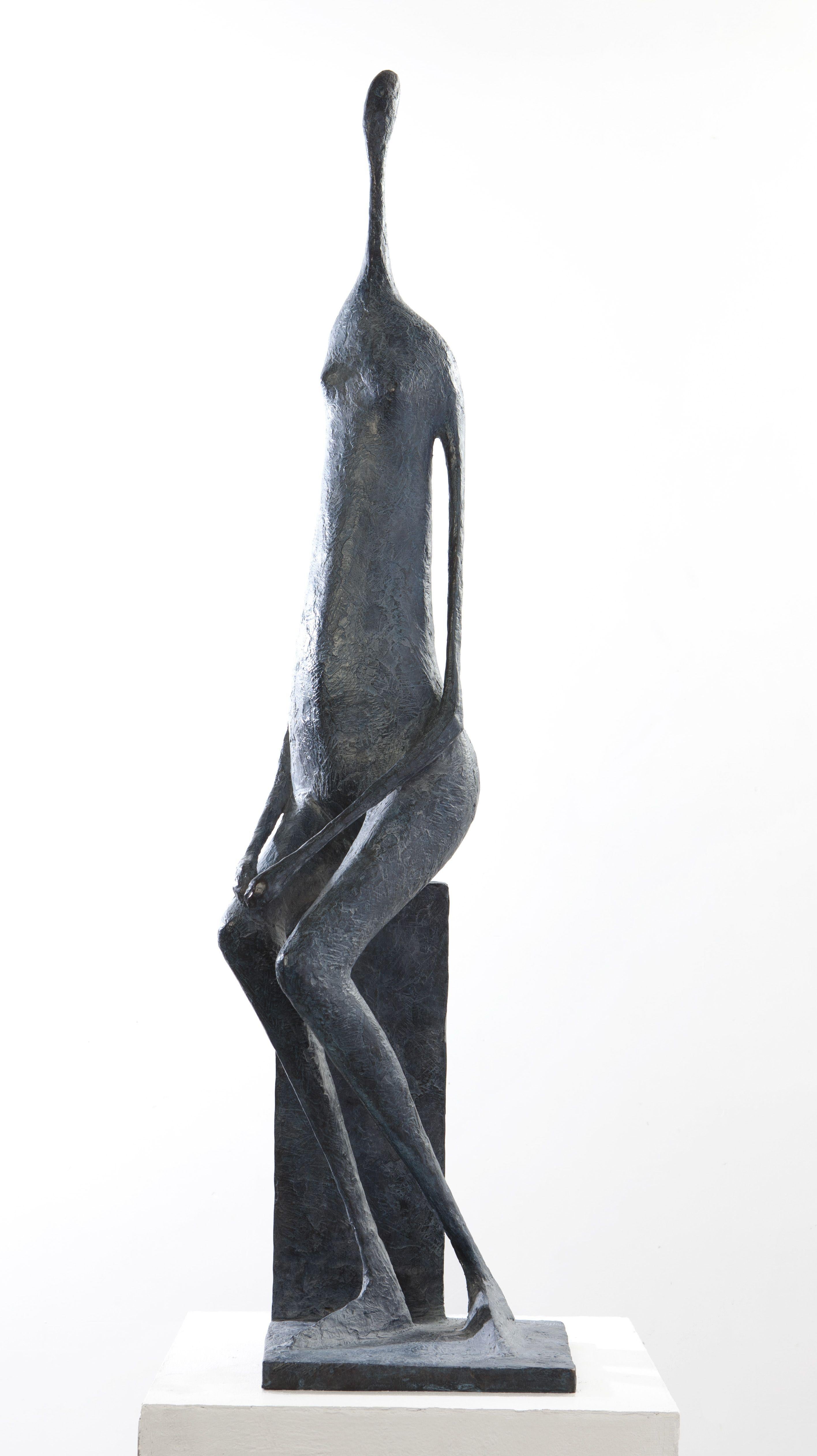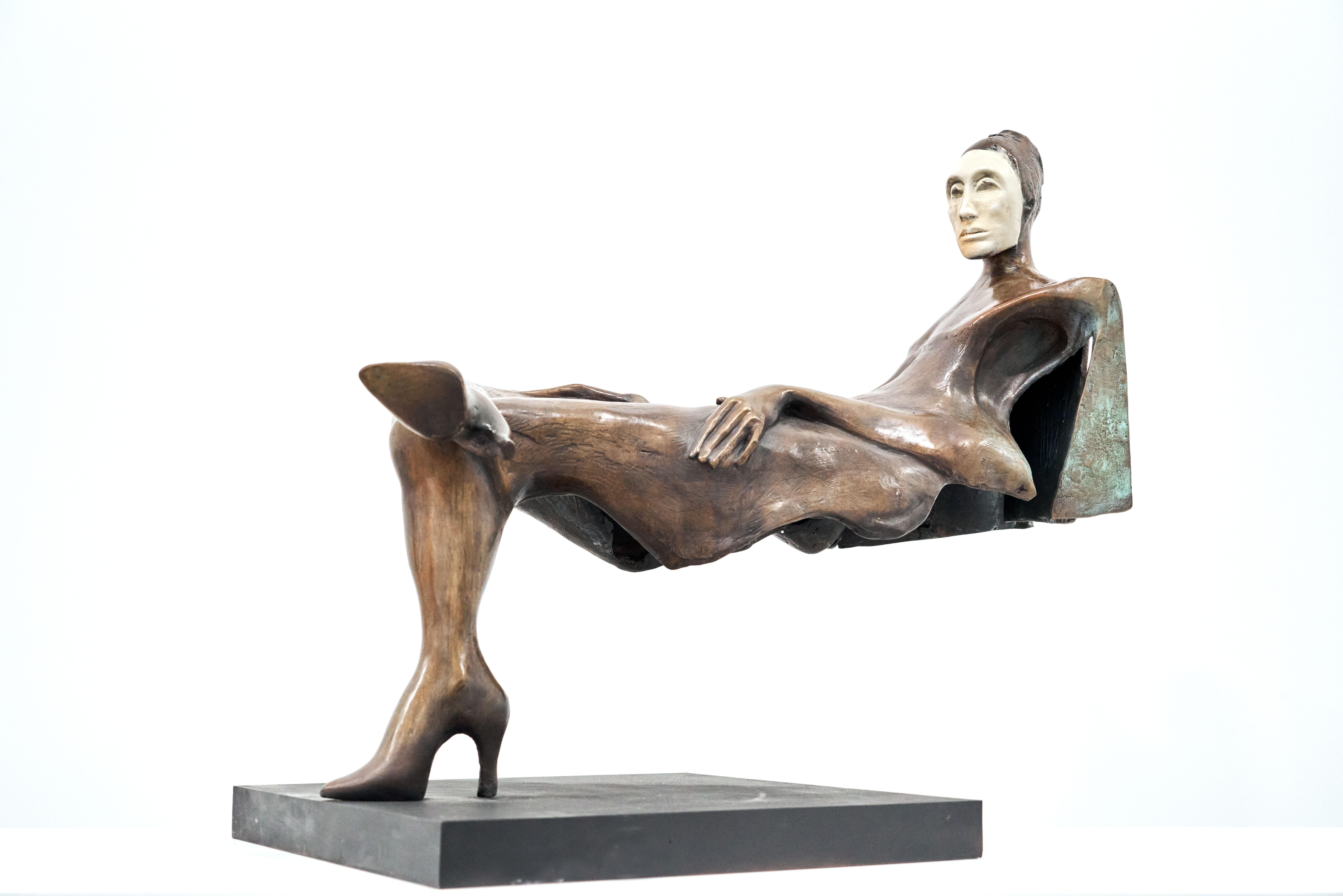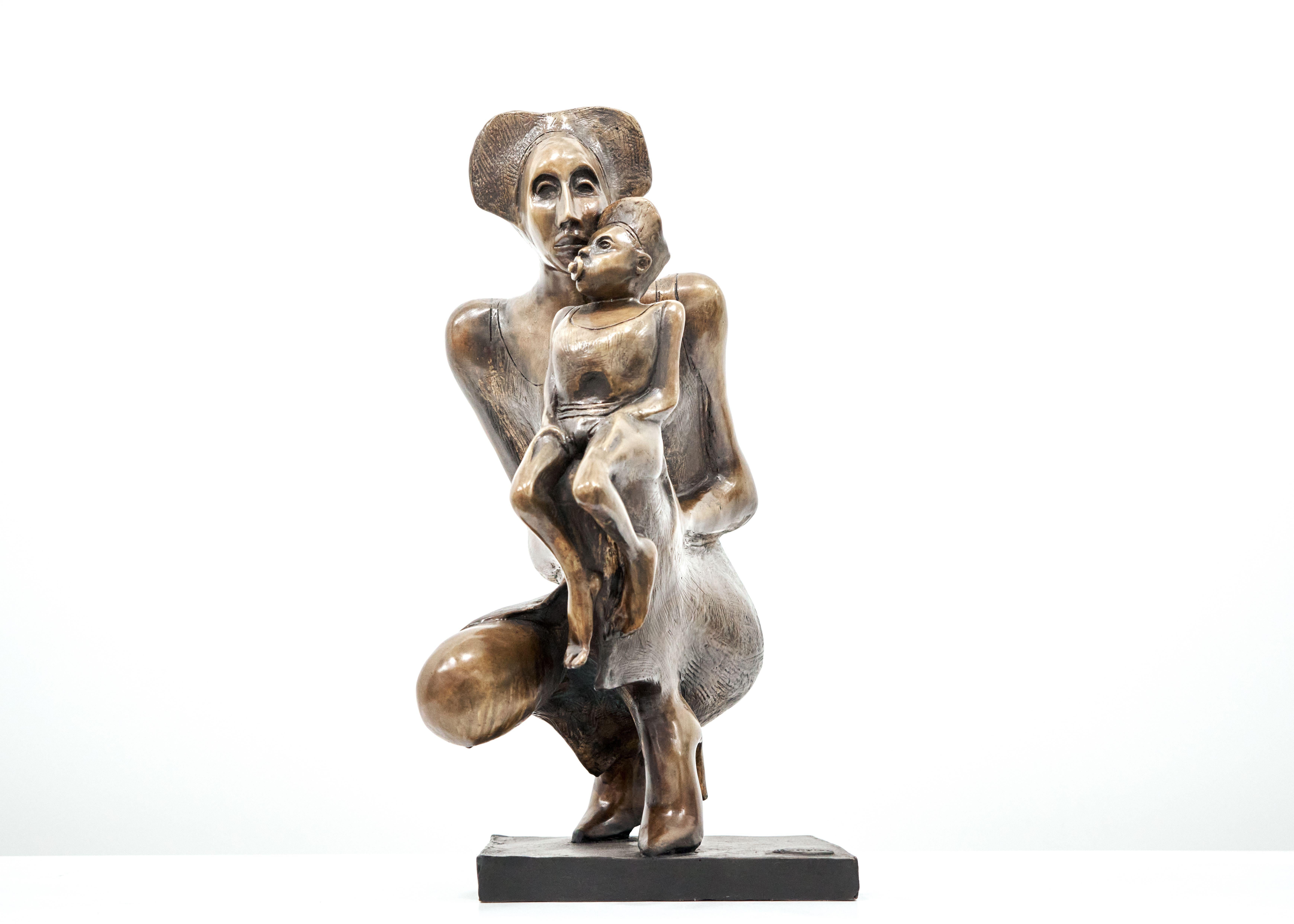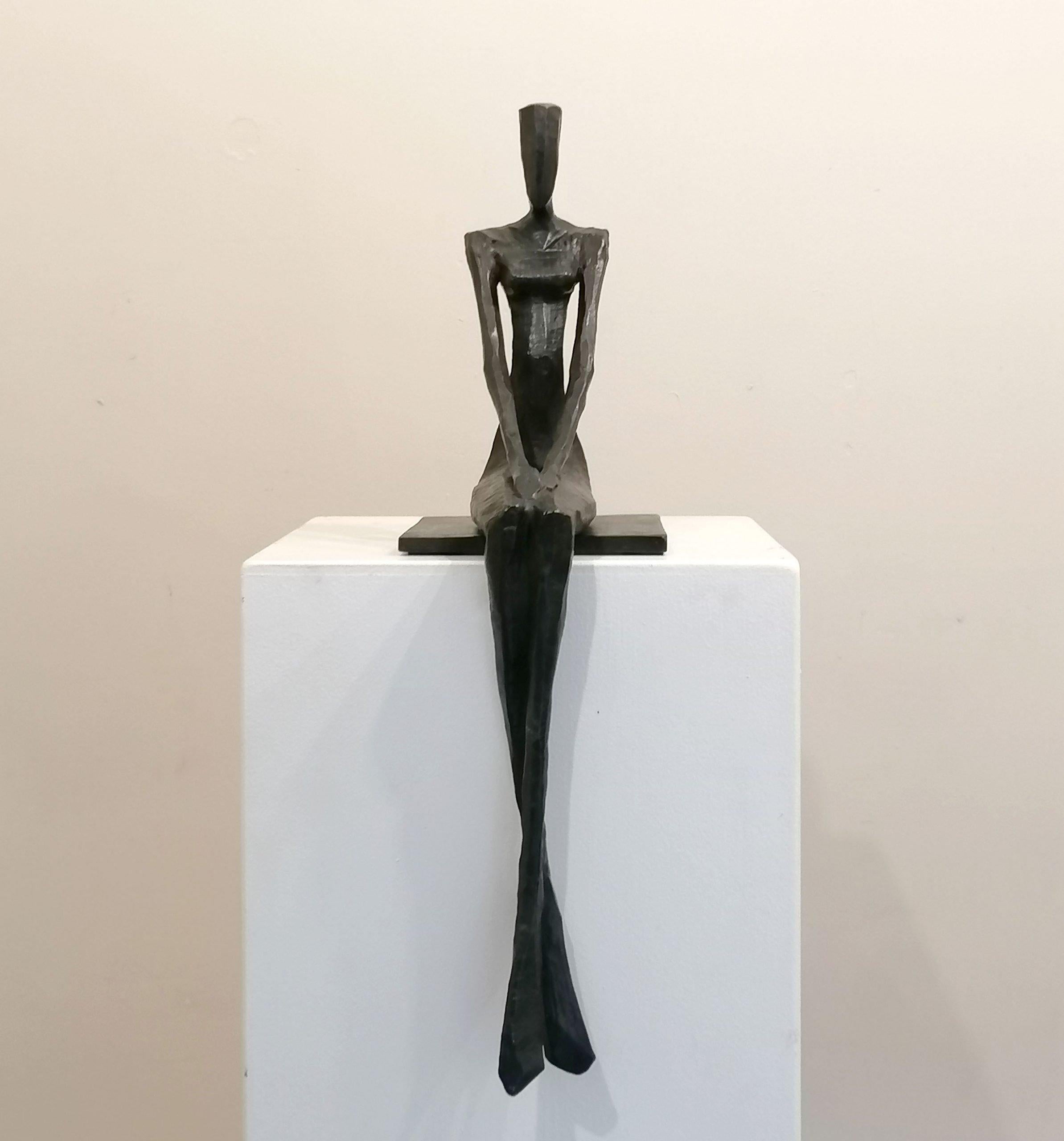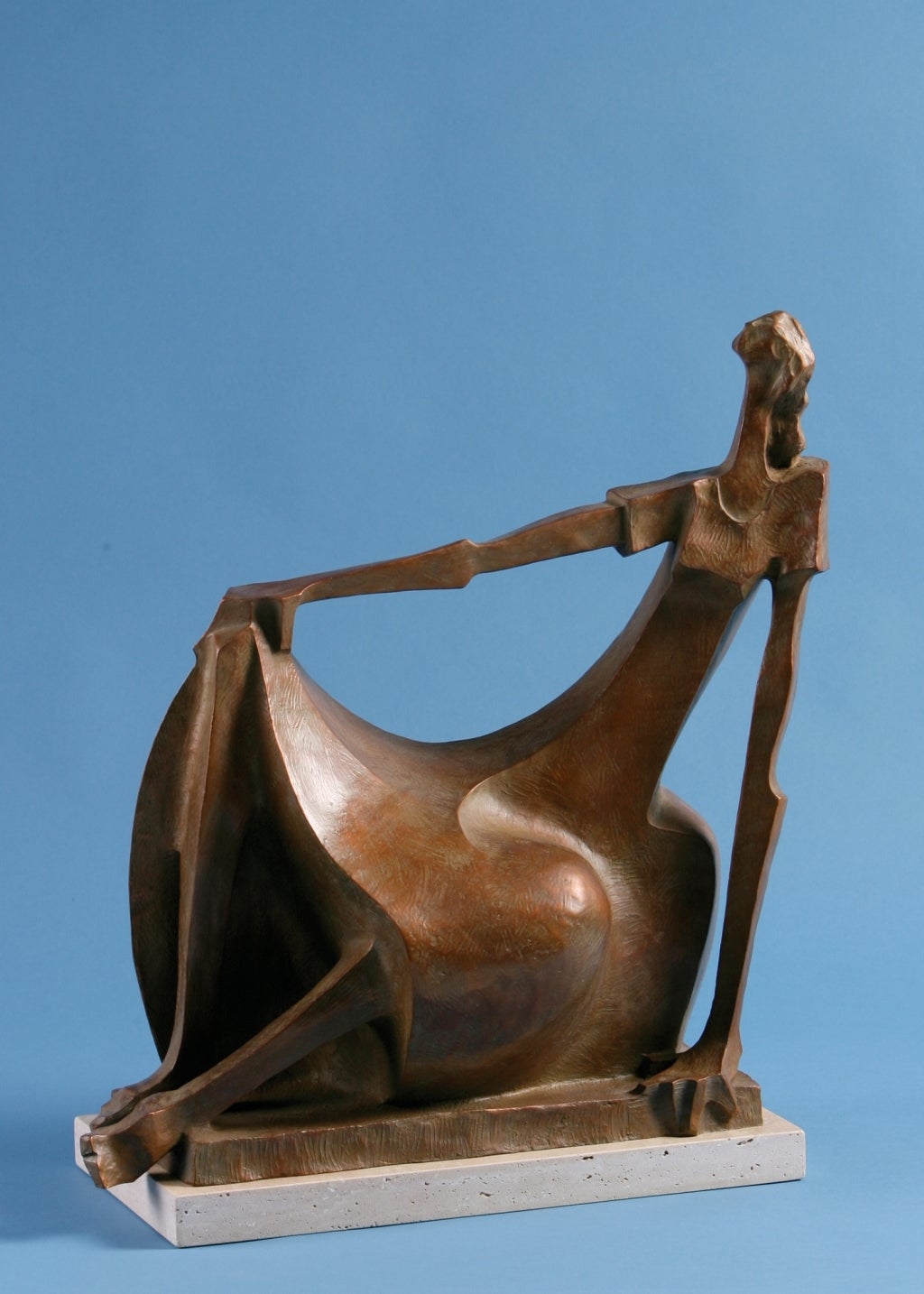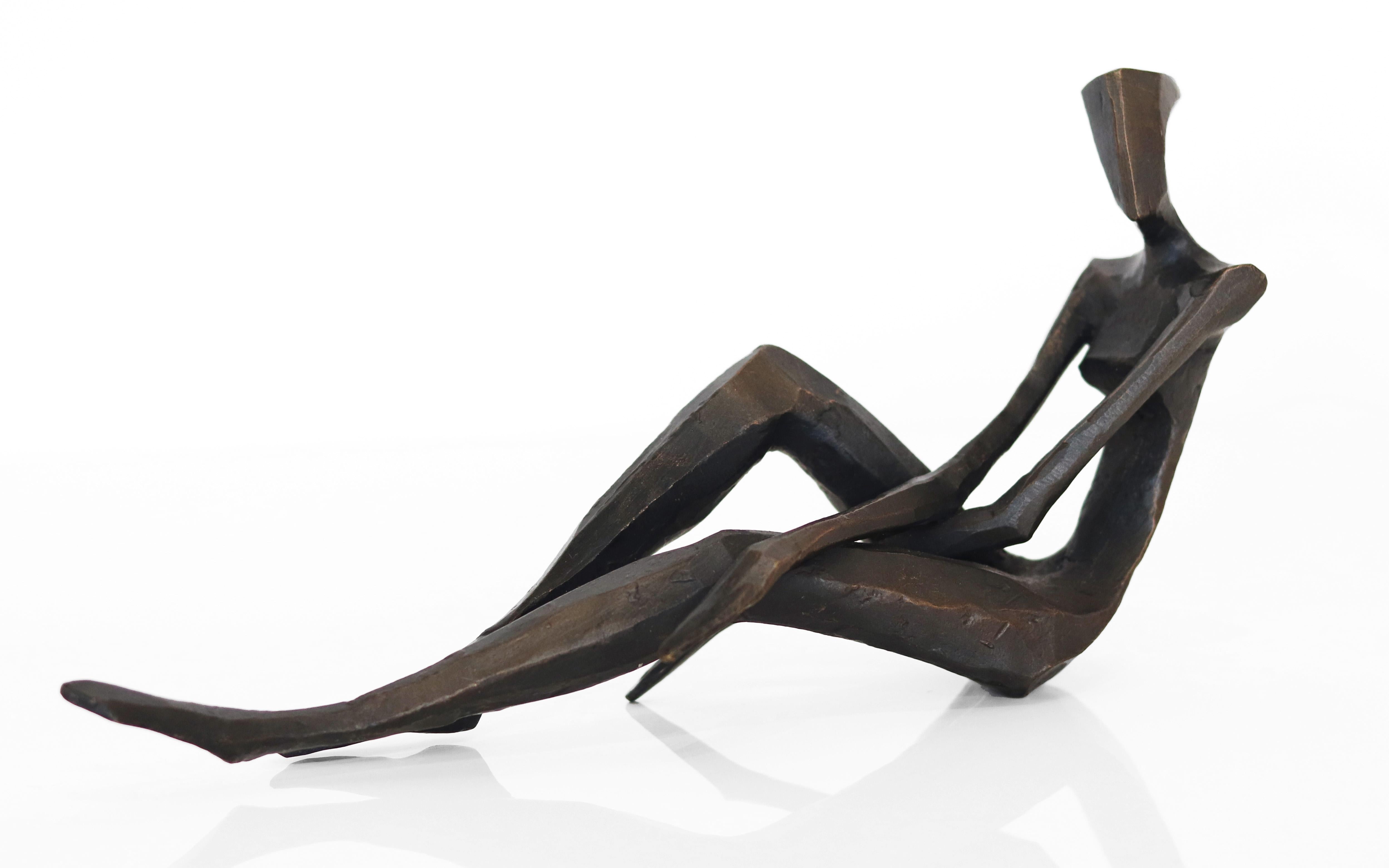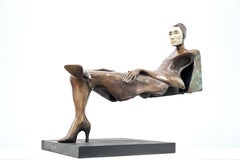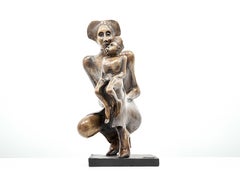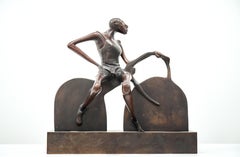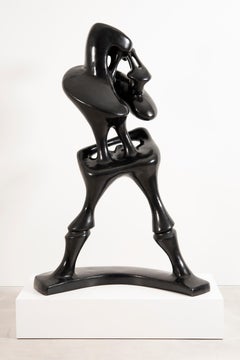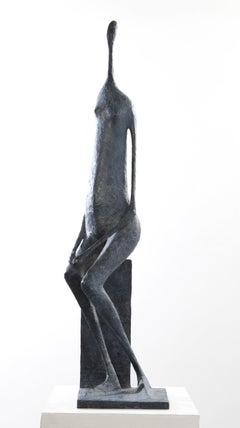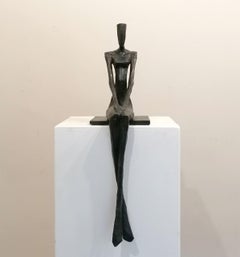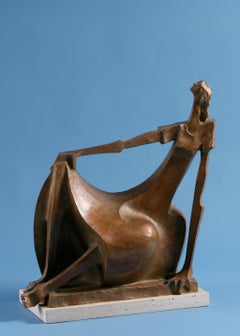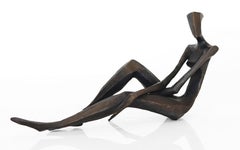Items Similar to Jorge Seguí, Ilusion silla, 2000, Bronze, Edition of 7, 78 x 90 x 33 cm
Want more images or videos?
Request additional images or videos from the seller
1 of 6
Jorge SeguíJorge Seguí, Ilusion silla, 2000, Bronze, Edition of 7, 78 x 90 x 33 cm2000
2000
Price Upon Request
Price Upon Request
Price Upon Request
Price Upon Request
Price Upon Request
Price Upon Request
Price Upon Request
Price Upon Request
Price Upon Request
Price Upon Request
About the Item
Jorge Seguí
Ilusion silla, 2000
Bronze, Edition of 7
78 x 90 x 33 cm 30.7 x 35.4 x 12.9 in.
Signed and Numbered.
Jorge Seguí b. 1945, Argentina. He attended the School of Fine Art of Argentina, Specializing in Sculpture at the University of Córdoba. At the age of 20 he traveled to Spain to extend his studies and soon exhibited in Peru, Ecuador, Colombia and Venezuela. He lived and worked in Venezuela for 20 years. During the following years he participated in many exhibitions, obtaining the National Engraving Award Swift, Museum of Modern Art in Buenos Aires. Since 1996, he has lived and worked in the United States. He has received important international recognitions, and he is present in important fairs of art. Is represented in collections deprived in Europe, Latino America and the United States, as well as in recognized galleries and museums of Florida.
Jorge Seguí, complex imaginer, is the product of his philosophical investigations on humanity. Their sculptures raise an ideal being and phenomenal, incarnation of the generic masculine and feminine archetypes.
- Creator:Jorge Seguí (1945, Argentinian)
- Creation Year:2000
- Dimensions:Height: 30.71 in (78 cm)Width: 35.44 in (90 cm)Depth: 13 in (33 cm)
- Medium:
- Movement & Style:
- Period:
- Condition:
- Gallery Location:Miami, FL
- Reference Number:1stDibs: LU161329383022
About the Seller
5.0
Vetted Professional Seller
Every seller passes strict standards for authenticity and reliability
Established in 1989
1stDibs seller since 2021
Typical response time: 20 hours
- ShippingRetrieving quote...Shipping from: Miami, FL
- Return Policy
Authenticity Guarantee
In the unlikely event there’s an issue with an item’s authenticity, contact us within 1 year for a full refund. DetailsMoney-Back Guarantee
If your item is not as described, is damaged in transit, or does not arrive, contact us within 7 days for a full refund. Details24-Hour Cancellation
You have a 24-hour grace period in which to reconsider your purchase, with no questions asked.Vetted Professional Sellers
Our world-class sellers must adhere to strict standards for service and quality, maintaining the integrity of our listings.Price-Match Guarantee
If you find that a seller listed the same item for a lower price elsewhere, we’ll match it.Trusted Global Delivery
Our best-in-class carrier network provides specialized shipping options worldwide, including custom delivery.More From This Seller
View AllJorge Segui Magic Woman, 2019 Bronze. 1/3 AP
By Jorge Seguí
Located in Miami, FL
Jorge Segui
Magic Woman, 2019
Bronze. 1/3 AP
83.8 x 91.4 x 59.6 cm 33 x 36 x 23.5 in.
Signed and Numbered.
Jorge Seguí b. 1945, Argentina. He attended th...
Category
2010s Contemporary Figurative Sculptures
Materials
Bronze
Price Upon Request
Jorge Seguí, Esperansilla, Bronze, Edition 1/7, 2003
By Jorge Seguí
Located in Miami, FL
Jorge Seguí
Esperansilla, 2003
Bronze, Edition 1/7 + 3AP
71.1 x 40.6 x 30.4 cm 28 x 16 x 12 in.
Signed and Numbered.
Jorge Seguí b. 1945, Argentina. He a...
Category
Early 2000s Contemporary Figurative Sculptures
Materials
Bronze
Price Upon Request
Jorge Seguí, Ciclista IX, Bronze, Edition 7/7, 1990-1995
By Jorge Seguí
Located in Miami, FL
Jorge Seguí
Ciclista IX, 2010-13
Bronze, Edition 7/7
70.5 x 18 x 70 cm 27.7 x 7 x 27.5 in.
Signed and Numbered.
Jorge Seguí b. 1945, Argentina. He attend...
Category
1990s Contemporary Figurative Sculptures
Materials
Bronze
Price Upon Request
Agustín Cárdenas, El Violinista, Bronze, Edition 3/3, 1989, Big size
By Agustín Cárdenas
Located in Miami, FL
Agustín Cárdenas
El Violinista, 1989
Bronze. Ed. 3/3
177 x 120 x 61 cm 69.6 x 47.2 x 24 in.
AGUSTIN CARDENAS
(b. 1927, Matanzas, Cuba; d. 2001 Havan...
Category
1980s Futurist Figurative Sculptures
Materials
Bronze
Francisco Narváez Forma (BFM-002), 1956, Bronze, Edition of 25, 30 x 8 x 10 cm
Located in Miami, FL
Francisco Narváez
Forma (BFM-002), 1956
Bronze (1970)
Edition of 25
30 x 8 x 10 cm
11.8 x 3.1 x 3.9 in.
LITTERATURE
Registro General de la obra de...
Category
1950s Abstract Abstract Sculptures
Materials
Bronze
Agustín Cárdenas, Le Repos Passionné, 1989, Bronze. Edition 7/7
By Agustín Cárdenas
Located in Miami, FL
Agustín Cárdenas
Le Repos Passionné, 1989
Bronze. Ed. 7/7
60 x 145 x 51.5 cm 23.6 x 57 x 20.2 in.
The artwork is accompanied by a certificate of aut...
Category
1980s Futurist Figurative Sculptures
Materials
Bronze
You May Also Like
Large Seated Figure I by Pierre Yermia - contemporary bronze sculpture
By Pierre Yermia
Located in Paris, FR
Large Seared Figure I (Grande figure assise I) is a large-scale sculpture by French contemporary artist Pierre Yermia. Bronze, 111 cm × 24 cm × 22 cm. Edition of 8 + 4 A.P. Each cas...
Category
2010s Contemporary Figurative Sculptures
Materials
Bronze
Dorothea by Nando Kallweit. Elegant bronze sculpture of a seated female form
By Nando Kallweit
Located in Coltishall, GB
Dorothea is an elegant figurative bronze sculpture by Nando Kallweit.
An elongated, graceful seated female form.
Modelled on modern postures but with a nod to the importance of herit...
Category
21st Century and Contemporary Other Art Style Figurative Sculptures
Materials
Bronze
"Millicent 5/12" contemporary bronze sculpture of a woman sitting in full dress
By Wayne Salge
Located in Edgartown, MA
The historic tradition of cast bronze provides a contemporary avenue for the creation of Wayne Salge’s abstracted human and animal figures. Thoroughly modern and distinctly impressio...
Category
2010s Modern Sculptures
Materials
Bronze
Josie - Elegant Original Figurative Bronze Sculpture
By Nando Kallweit
Located in Los Angeles, CA
German sculptor Nando Kallweit produces figurative bronze sculptures and reliefs with aquiline and a graceful modern appeal. Kallweit is inspired by seemingly disparate cultures; the...
Category
21st Century and Contemporary Abstract Figurative Sculptures
Materials
Bronze, Metal
"Untitled" bronze sculpture of seated female figure by artist Felipe Castañeda
By Felipe Castañeda
Located in Boca Raton, FL
"Untitled" bronze sculpture of a female nude by artist Felipe Castañeda. Inscribed F. Castañeda 1984 P/A on base.
Category
1980s Modern Figurative Sculptures
Materials
Bronze
A Sitting Nude, Contemporary Bronze Figurative Original Sculture
By Michal Kubiak
Located in Warsaw, PL
MICHAŁ KUBIAK (born in 1946)
Studied at the Academy of Fine Arts in Poznan (1967-1972). He received his degree in sculpture in the studio of Olgierd Truszyński. Since 1972 he has p...
Category
2010s Minimalist Figurative Sculptures
Materials
Granite, Bronze
More Ways To Browse
Argentina Sculpture
Henry Wallace
Hilding Werner
Hockney Inspired Paintings
Homme Nu
Hugh Bolton Jones
Humming Bird Prints
Hunt Slonem Cockatoo Whisper
Ikeda Masuo
Impressionist Garden Party
Indian Chief Print
Irving Marantz
Isabelle Adjani
J Brubaker
J J Big Floor Light
J Steele
James Scoppettone
James Walter Gozzard
